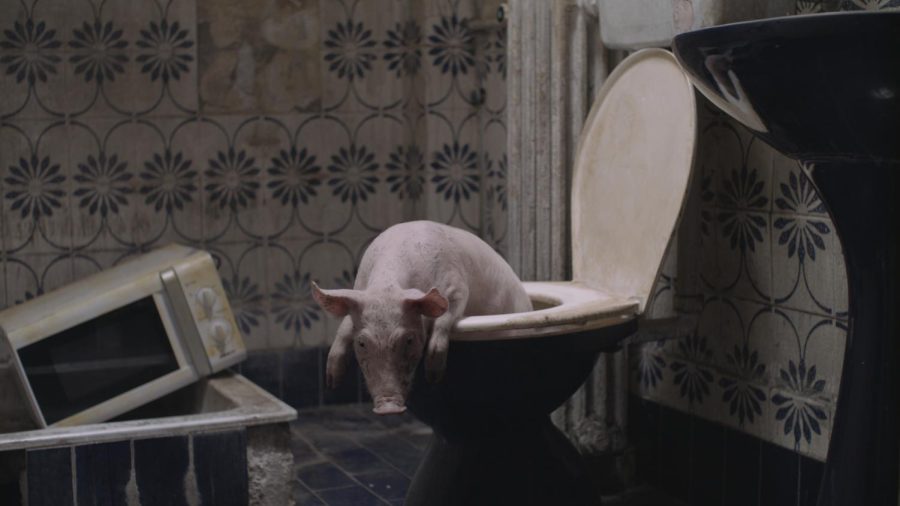SLAMDANCE: ‘Snow White Dies at the End’ Gets Lost in Translation
February 9, 2022
From its narrator being a fly on the wall to an angry haunted toilet, Kristijan Risteski’s debut film “Snow White Dies at the End” has all the elements to make an amazing absurdist film. The genuine funny and campy moments sprinkled throughout the film unfortunately are overshadowed by the muddled plot and dramatic tonal shifts.
Meandering Plot to Nowhere
I will admit that I was initially drawn to the film and its promise of a society of backward farting people. But oddly enough, despite both the Slamdance page and IMDb both including this blurb, there was no flatulence to be found in the film.
The film follows the lives of seven main characters with three intertwined stories: an addict and his gynecologist godmother who sell drugs together, three middle-aged best friends forced to grow up and finally a romance between a reclusive artist and autistic radio host. Risteski opts for a non-linear storyline which I think is a strong point of the film and kept me interested throughout. Interspersed throughout the film are disorienting POV shots from the film’s intuitive narrator Milica the fly, buzzing around the city.
Despite the appeal of the non-linear plot, the three storylines the film explores are confusing and don’t really lead anywhere. After finishing the first time I had a hard time recalling what I had even watched. Each storyline had potential but got lost in the slow winding pace of the film.
Warning: spoilers ahead.
Tonal Dissonance
My biggest gripe with “Snow White Dies in the End” is its lack of tonal consistency. There are multiple times throughout the film where the tone between and during a scene dramatically shifts. Sometimes this works and creates absurd moments I laughed at while others left me deeply uncomfortable.
For instance one of the funniest moments in the film comes after the addict, Bobby, and one of his disgruntled buyers are arguing in a filthy bathroom. Out of nowhere, they are abruptly interrupted by the possessed toilet who yells at them to get out.
Other tonal shifts are not as successful. The radio host Igor’s first real scene opens with a funny moment where he lists why he likes lists live on air. The scene then dramatically changes tones with a caller committing a hate crime against Igor and violently harassing him. This does not get addressed later in the film.
These tone problems seem to be part of a larger problem.
Uninterested in Its Own Characters
Each of the characters in this film face very real and traumatic experiences but they all go unaddressed. The most glaring of these is the death of Bobby due to an overdose. Bobby’s story partner and godmother, the titularly named Snow White, never really react to his death, outside of his less than two-minute funeral scene, and fade completely from the film afterward.
Maya, the secretive artist, who is shown throughout the movie to be deathly afraid of other people casually skips over the fact Igor broke into her home and watched her sleep. The film not only alienates its characters from the audience through this lack of development but also from its own internal logic.
Overall I think “Snow White Dies at the End” had a lot of promising elements but they got lost in translation.








